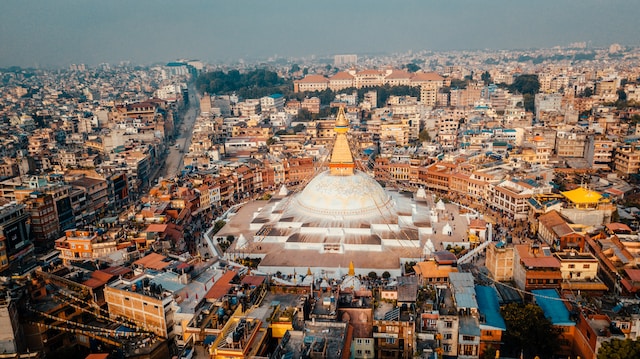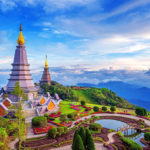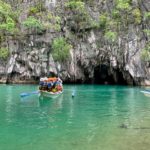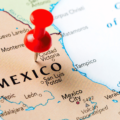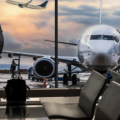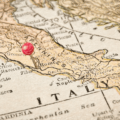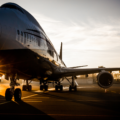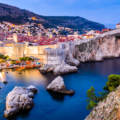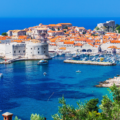Life as a digital nomad in Kathmandu, Nepal
Setting up as a digital nomad in Kathmandu, Nepal might seem daunting with its distinct culture and remote location. Yet, the city’s unique blend of history, aesthetics, and affordability make it an increasingly popular choice among the global remote work community.
This comprehensive guide will provide you with all the information you need to transition smoothly into life in Kathmandu – covering everything from visa requirements to cost-effective living options.
Key Takeaways
- Kathmandu, Nepal offers an affordable cost of living for digital nomads, with monthly expenses ranging from $514 to $1,131.
- Accommodation options in Kathmandu cater to various budgets, with apartments costing $200 – $500 per month and budget guesthouses starting at around $10 per night.
- The local cuisine in Kathmandu is excellent and affordable, allowing digital nomads to indulge in traditional Nepali dishes and flavors without breaking the bank.
- Safety is a key advantage of being a digital nomad in Kathmandu, as Nepal ranks as the third safest country in South Asia.
- The breathtaking mountains surrounding Kathmandu provide a unique backdrop for remote work and offer opportunities for adventure and exploration.
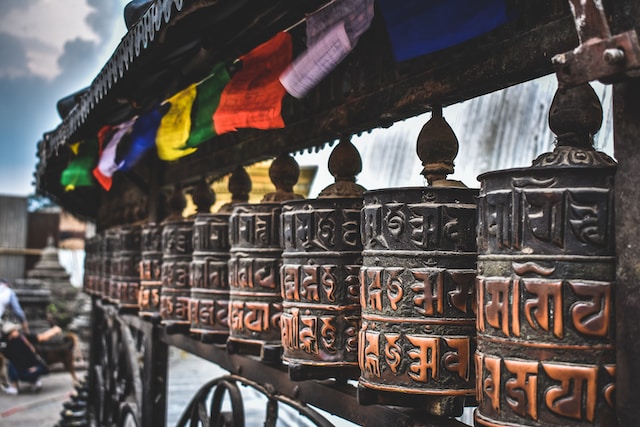
Kathmandu, Nepal
How to get to Kathmandu
Kathmandu, the capital city of Nepal, can be reached by various means of transportation. Here are some common ways to get to Kathmandu:
1. By Air:
– Tribhuvan International Airport in Kathmandu is the main international airport in Nepal. Numerous airlines operate direct flights to Kathmandu from major cities around the world.
– You can book a flight to Kathmandu from your nearest international airport. The duration of the flight will depend on your location and any layovers involved.
2. Overland Travel:
– If you are already in a neighboring country like India or Tibet, you can reach Kathmandu by crossing the border via land routes.
– There are various entry points between Nepal and India, such as Kakarbhitta, Birgunj, or Sunauli, where you can cross the border by road.
– From Tibet, you can travel overland through the Kodari border crossing.
3. Bus Travel:
– Kathmandu is well-connected to major cities in Nepal by a network of bus routes.
– You can take a bus from cities like Pokhara, Chitwan, or Lumbini to Kathmandu. The duration of the journey will depend on the distance and road conditions.
4. Domestic Flights:
– If you are already in Nepal and want to reach Kathmandu from other cities within the country, domestic flights are available.
– Domestic airlines operate regular flights from major cities like Pokhara, Bharatpur, and Biratnagar to Kathmandu.
It’s important to check the latest travel advisories, visa requirements, and any COVID-19-related travel restrictions before planning your journey to Kathmandu. Additionally, consider the season and weather conditions, as flights and overland routes may be affected during monsoon or other challenging periods.
Living in Kathmandu as a Digital Nomad – cost of living
Living in Kathmandu as a digital nomad offers an affordable cost of living, with plenty of options for accommodation, food, and transportation expenses.
Cost of living
Experiencing life as a digital nomad in Kathmandu can be surprisingly affordable. The city’s cost of living for a single person hovers around $514 per month, making it an ideal haven for budget-conscious remote workers.
For those bringing their family along on this exciting journey, the monthly expenses rise to approximately $1,131 — still significantly less than many other popular digital nomad destinations worldwide.
Keep in mind that these figures don’t factor in your flight costs. However, once you set foot into Kathmandu’s thriving digital community and immerse yourself in its rich culture and amicable surroundings, you’ll find each dollar spent is undoubtedly worth it.
Accommodation expenses
Living in Kathmandu presents digital nomads with a broad range of accommodation options to suit various budgets. Whether you prefer the vibrancy of areas like Thamel, Boudha, and Patan or desire quieter locales, there’s something for everyone.
Notably, securing housing isn’t excessively costly here – it’s part of what makes life in Kathmandu cost-effective.
Booking your stay ahead of time can yield better rates, particularly during peak tourist seasons. For instance, renting an apartment could set you back $200-$500 per month depending on location and amenities included.
Meanwhile budget guesthouses usually start at about $10 per night, while hotels offer rooms from around $20 up – all quite manageable compared to many western cities. Furthermore, co-working spaces are emerging throughout the city; these places often feature free coffee and tea along with reliable wifi connectivity- a potent combo most digital nomads will appreciate!
Food and beverage expenses
Kathmandu delivers a gastronomic experience without hurting your wallet. Averaging $1 to $2, the cost of coffee caters perfectly to digital nomads who appreciate their caffeine fix while working.
If you’re more into socializing after sundown, restaurants and bars serve beers for about $3 to $4 per drink. Wine lovers aren’t left behind either with prices hovering between $3 to $5 per glass.
Savouring the local cuisine is an adventure in itself; a standard meal can set you back between as little as $1.50 up to around $5 – an attractive range for many digital nomads looking at low-cost living options such as Kathmandu valley or Pokhara region.
Nature’s bounty thrives in Nepal’s capital city making it an appealing food haven that strengthens Kathmandu’s position among the best cities globally for remote workers as listed in Digital Nomad Guide To Kathmandu, Nepal.
Transportation expenses
Getting around Kathmandu as a digital nomad is not only convenient but also affordable. The city offers a variety of transportation options, including public buses, battery-run three-wheelers, and rickshaws.
These modes of transport are reasonably priced, allowing you to manage your transportation expenses within your budget. Additionally, the quality of service for transportation in Kathmandu is excellent, ensuring that you can travel comfortably and conveniently to your desired destinations.
Whether you’re exploring the city or venturing out into the surrounding areas, navigating through Kathmandu won’t break the bank while providing you with an efficient means of getting around.
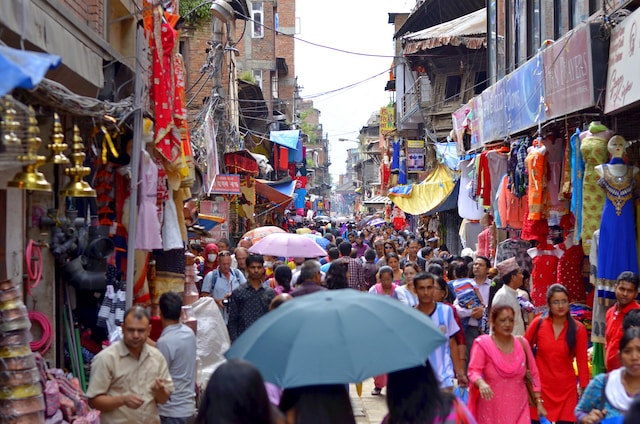
Thamel, Kathmandu, Nepal
Connectivity
Connectivity in Kathmandu can be challenging for digital nomads due to factors like bad internet connectivity and daily power shedding. While there are Wi-Fi options available in cafes and co-working spaces, the reliability of the internet connection may vary.
It’s important to have backup solutions such as portable hotspots or local SIM cards with data plans to ensure a stable connection. Additionally, power outages are common in Nepal, so having a reliable power bank or alternative power source is essential for uninterrupted work.
Despite these challenges, there are efforts being made to improve connectivity in Kathmandu, but it’s still advisable for digital nomads to be prepared for potential disruptions and have contingency plans in place.
Pros and Cons of Being a Digital Nomad in Kathmandu
Pros of being a digital nomad in Kathmandu include the safety of the country, friendly and helpful locals, and the breathtaking mountain views.
Safe country
Nepal is recognized as the third safest country in South Asia, making it an ideal destination for digital nomads seeking a secure environment. With a low occurrence of serious crimes, Kathmandu offers a relatively safe place to live and work remotely.
This sense of safety allows digital nomads to focus on their careers without constantly worrying about personal security. Whether exploring the vibrant streets or venturing into the breathtaking mountains, digital nomads can feel confident in their decision to make Kathmandu their base.
Friendly and helpful people
Kathmandu, Nepal is known for its incredibly friendly and helpful people, making it an ideal city for digital nomads and remote workers. The locals in Kathmandu have a warm hospitality that extends beyond personal interactions, creating a supportive environment for newcomers.
In addition to their welcoming nature, the people of Kathmandu are also proud of their rich cultural heritage, adding to the overall experience of living as a digital nomad in the city. This friendliness and helpfulness can be seen not only in personal interactions but also in the excellent customer service provided in cafes and coworking spaces.
Furthermore, this supportive attitude contributes to the overall safety and security of Kathmandu, providing digital nomads with peace of mind while they work and explore all that this incredible city has to offer.
Breathtaking mountains
Kathmandu, Nepal is renowned for its breathtaking mountains, making it an idyllic destination for digital nomads and remote workers who crave the great outdoors. Nestled in the mighty Himalayas, this city offers a unique opportunity to work amidst stunning natural beauty.
Imagine stepping out of your workspace and being greeted by awe-inspiring peaks, their majestic presence serving as a constant reminder of the wonders that surround you. For those who love trekking or simply appreciate magnificent landscapes, Kathmandu’s mountains are an endless source of inspiration and tranquility.
The Himalayas have long been adored by mountaineers and adventure enthusiasts, providing unforgettable views that will leave you enthralled during your time as a digital nomad in Kathmandu. Soak up these magnificent sights while pursuing your professional goals – there truly is no place quite like it on Earth.
Cost-friendly
Living in Kathmandu as a digital nomad is not only an enriching experience but also cost-friendly. The cost of living in Kathmandu, Nepal, is quite reasonable, with an average monthly cost of around $700.
This includes accommodation expenses, food and beverage expenses, transportation expenses, and other daily necessities. Compared to other popular digital nomad destinations, Kathmandu offers affordable options for rent and everyday goods.
For example, the median price for a hotel in Kathmandu is $534 per month while an Airbnb costs around $643 per month. Daily meals at local restaurants can be enjoyed for as little as $3-5 dollars.
Furthermore, transportation costs are relatively inexpensive with options such as buses or taxis readily available.
Living on a budget doesn’t mean compromising on quality either. The city provides excellent internet connection options to cater to the needs of digital nomads. So whether you’re working from a co-working space like Platform Inc or enjoying the social atmosphere of popular cafes for working like Jhamel Coffee House or Himalayan Java Coffee Shop, you’ll have speedy connectivity to keep you productive.
Excellent local cuisine
Enjoying the excellent local cuisine is a notable advantage for digital nomads visiting Kathmandu, Nepal. The city offers a wide variety of delicious dishes and flavors that are sure to satisfy any food lover’s cravings.
From traditional Nepali cuisine to international options, there is something for everyone to enjoy. Thamel, a popular area in Kathmandu, is especially recommended for experiencing the local cuisine with its numerous restaurants and coffee shops serving up mouthwatering delights.
Whether it’s momo (dumplings), dal bhat (lentils and rice), or Newari delicacies like kwati (mixed bean soup) and bara (fried lentil pancake), you’ll find yourself indulging in unique flavors and culinary experiences that will leave a lasting impression.
Political instability
Kathmandu, Nepal is a city that offers incredible opportunities for digital nomads and remote workers. However, it’s important to be aware of the political instability that the country has faced for many years.
This has led to riots and periods of unrest, which can impact daily life and work routines. While Kathmandu is known for its lack of crime, the education level is low and the power grid can be unreliable.
It’s crucial for digital nomads considering Kathmandu as their base to weigh these factors with the city’s rich culture, friendly locals, and affordable cost of living. Additionally, vulnerability to climate change is also a drawback in this region.
Challenging roads
Navigating the roads in Kathmandu as a digital nomad can be quite challenging. While there are highways connecting the city to suburban and rural areas, they are often congested and poorly maintained, resulting in slow traffic and rough conditions.
The lack of proper infrastructure and road signage adds to the difficulty of getting around. It’s important for digital nomads to plan their routes carefully and allow extra time for travel due to unexpected delays.
Additionally, it’s advisable to use private transportation services or hire a local driver who is familiar with the intricacies of navigating these challenging roads. Taking precautions while traveling on two-wheeled vehicles is also crucial, as road safety standards may differ from what you’re accustomed to.
Pollution
Kathmandu, Nepal, is known for its breathtaking beauty, but it also has an unfortunate pollution problem that can impact digital nomads. The city experiences high levels of air and water pollution, which can be a concern for those seeking a clean and healthy environment to work and live in.
Unmanaged dumping sites are a common sight, contributing to the pollution issue. Additionally, traffic noise and the presence of factories further add to the pollution levels. Digital nomads must take these factors into consideration when deciding whether Kathmandu is the right destination for them.
It’s important to prioritize personal well-being while enjoying all that this vibrant city has to offer.
Kathmandu’s unique charm comes with challenges such as unheated buildings during colder months and lukewarm water supply even for showers due to reliance on urban aquifers which tend to be heavily polluted.
While exploring the bustling streets or working from cozy cafes, digital nomads might face disruptions caused by noise pollution from traffic or development activities like construction sites around town.
Weather/climate
Kathmandu’s weather and climate are a major draw for digital nomads seeking an ideal work environment. With mild temperatures ranging from the mid-50s to the mid-80s Fahrenheit (10-30 Celsius), it offers a comfortable setting throughout the year.
This means you can enjoy outdoor activities, such as exploring the city’s UNESCO world heritage sites or going on hikes in the Himalayan mountains, without extreme heat or cold hindering your plans.
The moderate temperatures also create a pleasant backdrop for working remotely, allowing you to find cozy coffee shops with free wifi or even take advantage of outdoor workspaces. Kathmandu’s climate truly adds to the overall appeal of living as a digital nomad in this vibrant city.”.
Visa Requirements
To kickstart your digital nomad journey in Kathmandu, it’s essential to understand the visa requirements for visiting Nepal. The only visa option available is the tourist visa, even if you plan to work remotely.
Fortunately, obtaining a tourist visa is a quick and straightforward process that can be done upon arrival at Tribhuvan International Airport in Kathmandu. This applies to all foreigners except Indian nationals who are exempt from a visa requirement.
The Nepal tourist visa allows you to stay and work in Kathmandu as a digital nomad. It’s worth noting that this visa can also be extended if needed. With its hassle-free visa policies and ease of obtaining a tourist visa, Kathmandu becomes an ideal destination for remote workers like yourself seeking new experiences while earning an income online.
Remember: The process of applying for a tourist visa in Kathmandu is convenient and efficient, making it accessible for digital nomads looking to immerse themselves in the vibrant culture and breathtaking landscapes of Nepal.
So pack your bags, grab your laptop, and get ready to embark on an exciting adventure as a digital nomad in Kathmandu!
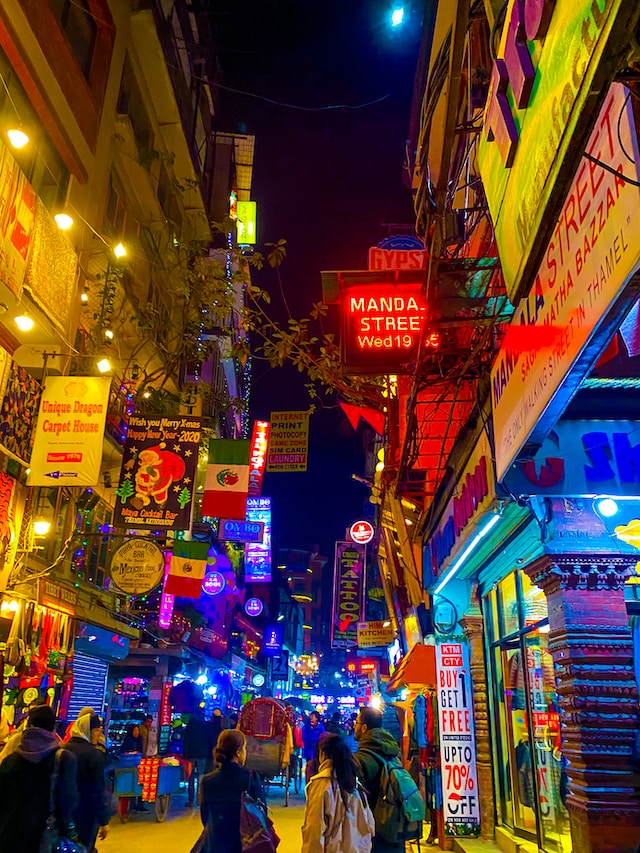
Thamel, Kathmandu, Nepal
Finding Accommodation
Finding accommodation in Kathmandu is easy and affordable, with co-working spaces and popular cafes offering comfortable places to work. Keep reading to discover the best options for digital nomads in the city.
Co-Working Spaces
Kathmandu, Nepal offers a variety of co-working spaces and cafes to cater to different types of digital nomads. These co-working spaces are scattered around the city, providing convenient locations for remote work. Some co-working spaces in Kathmandu are bright, clean, and offer modern workspaces with high-speed internet.
Communitere is a popular co-working space located in the Patan area of Kathmandu, offering spacious and modern workspaces. Co-working spaces in Kathmandu provide a positive work environment for digital nomads, allowing them to collaborate and network with like-minded individuals. Kathmandu’s co-working spaces are equipped with amenities and facilities to support remote work, such as comfortable seating, meeting rooms, and reliable internet connections.
These co-working spaces offer a great alternative to traditional office spaces and provide a sense of community for digital nomads. Digital nomads can find suitable accommodation options near co-working spaces in Kathmandu, allowing for a seamless work-life balance. The availability of co-working spaces in Kathmandu contributes to the city’s appeal as a destination for digital nomads.
Popular cafes for working
Looking for a cozy cafe in Kathmandu to get your work done as a digital nomad? Here are some popular cafes that offer fast wifi and a productive atmosphere:
- Himalayan Java Coffee: This cafe is known for its great coffee and comfortable seating. It has multiple locations in Kathmandu, including Thamel and Lazimpat.
- Top of the World Coffee: Situated in Thamel, this cafe offers stunning rooftop views of the city along with delicious coffee options. It’s a great spot to work while enjoying the scenery.
- French Bakery: With its charming ambiance and tasty pastries, the French Bakery in Jawalakhel is a favorite among digital nomads. The wifi here is reliable, making it an ideal place to get some work done.
- Café Soma: Located in Jhamiskhel, this trendy cafe offers a peaceful environment and good internet connectivity. The cozy seating arrangements and friendly staff make it a top choice for remote workers.
- La Palpasa Coffee: Situated near Patan Durbar Square, this cafe combines traditional Nepali architecture with modern interiors. Apart from good coffee, it provides free wifi for customers.
- Kairos Cafe: As a social enterprise working against exploitation, Kairos Cafe not only serves excellent coffee but also promotes social causes. It has fast wifi and provides a comfortable space for digital nomads to work.
Must-See Places in Kathmandu
- Pashupatinath Temple: Explore the famous Hindu temple known for its intricate architecture and religious significance.
- Boudhanath Stupa: Visit the largest Buddhist stupa in Nepal, a UNESCO World Heritage site, and immerse yourself in the peaceful atmosphere.
- Swayambhunath Temple: Climb the iconic Monkey Temple and enjoy panoramic views of Kathmandu Valley while experiencing ancient Buddhist traditions.
- Durbar Square: Wander through this historical square that showcases beautiful palaces, temples, and traditional Newari architecture.
- Patan Durbar Square: Discover the cultural heritage of Patan, an ancient city near Kathmandu, with its stunning palace complex and intricate artwork.
- Thamel: Explore this vibrant neighborhood filled with shops, restaurants, and bars catering to travelers and digital nomads.
Tips for Staying Healthy as a Digital Nomad in Kathmandu
Stay active by exploring the city on foot and trying out outdoor activities like hiking or yoga to maintain your physical and mental well-being.
Stay active
Staying active is crucial for digital nomads living in Kathmandu to maintain their health and well-being. With its breathtaking mountains and stunning natural landscapes, Nepal offers a plethora of opportunities for outdoor activities such as hiking and trekking in the Himalayas.
Taking breaks from work to engage in these adventures not only promotes physical fitness but also allows digital nomads to explore the country’s rich cultural heritage and spiritual practices.
Additionally, practicing yoga or meditation in one of Kathmandu’s many retreats can help reduce stress levels and improve overall mental well-being. Embracing an active lifestyle while enjoying all that Nepal has to offer is a sure way for digital nomads to make the most out of their time in this remarkable city.
Health risks
Staying healthy is crucial for digital nomads in Kathmandu, Nepal. While the city offers incredible experiences and opportunities, it’s important to be aware of potential health risks. Due to the high levels of pollution and dust in the air, respiratory issues can arise if proper precautions are not taken.
Additionally, poor sanitation and contaminated water sources may lead to gastrointestinal problems. To stay healthy, it is advisable to drink bottled or filtered water and avoid street food that may not be prepared in hygienic conditions.
Maintaining good hygiene practices such as regular handwashing can also help prevent illnesses. Furthermore, taking breaks from work to engage in physical activity like yoga or hikes amidst the breathtaking mountains can contribute to overall well-being while enjoying your digital nomad lifestyle in Kathmandu.
Transportation in Kathmandu
Getting around Kathmandu as a digital nomad is relatively easy and offers plenty of options for exploring the city and its surroundings. Here are some important transportation facts to keep in mind:.
– Public buses: Kathmandu has a well-developed public bus system that connects almost every part of the city. This makes it convenient for digital nomads to travel within Kathmandu and explore different areas.
– Battery-run three-wheelers: These small vehicles, known as tempos or tuk-tuks, are another popular mode of transportation in Kathmandu. They are affordable and can navigate through narrow streets, making them a convenient option for short-distance trips.
– Rickshaws: Traditional rickshaws pulled by a cyclist are still found in certain parts of Kathmandu. While they may not be as common as other modes of transport, they offer a unique way to experience the city’s charm at a leisurely pace.
– Taxis: Taxis are available in Kathmandu but can become expensive over time due to overtime rates. It is advisable to use them sparingly or negotiate fares before starting your journey.
– Local bus stands: If you plan on traveling beyond Kathmandu city limits, there are separate bus stands for local services within the Kathmandu Valley and long-distance buses to destinations like Pokhara.
This makes it easy to embark on day trips or longer excursions outside the capital.
With these various transportation options at your disposal, exploring all that Kathmandu has to offer becomes an exciting adventure waiting just outside your doorstep.
Cultural and Food Experiences in Kathmandu
Kathmandu is a vibrant city that offers a plethora of cultural and food experiences for digital nomads to explore. As the capital of Nepal, it’s no surprise that Kathmandu is a melting pot of diverse traditions and cuisines.
From exploring ancient temples and palaces to indulging in delicious Nepalese dishes, there’s something for everyone.
One must-visit place in Kathmandu is Durbar Square, located in the heart of the city. This UNESCO World Heritage site showcases stunning architecture with intricately carved wooden windows and doors.
It also hosts various festivals throughout the year, giving visitors an opportunity to witness traditional dances and rituals.
For those seeking authentic Nepalese cuisine, sampling momo is a must-do experience. These dumplings filled with meat or vegetables are considered a staple dish in Nepal. Another popular dish is dal bhat, which consists of lentil soup served with rice and accompanied by various side dishes like curries and pickles.
And if you’re feeling adventurous, don’t miss out on trying gundruk—a fermented leafy green vegetable that adds a unique flavor to any meal.
Exploring the local food scene can be an immersive cultural experience in itself. The narrow streets of Thamel are lined with small eateries offering delicious street food such as samosas, chatamari (a type of rice pancake), and sel roti (a sweet deep-fried bread).
Additionally, Kathmandu has international restaurants where you can satisfy your cravings for pizza or sushi.
Overall, Kathmandu provides digital nomads with an incredible opportunity to immerse themselves in rich cultural traditions while enjoying delectable local cuisine. Whether you’re wandering through ancient temples or savoring mouthwatering momos on the bustling streets, this city has something truly special to offer.
Conclusion
In conclusion, Kathmandu, Nepal is an incredible destination for digital nomads seeking adventure, culture, and a low cost of living. With its friendly people, breathtaking mountains, and vibrant co-working spaces and cafes, it offers the perfect balance between work and play.
Whether you’re exploring ancient temples or trekking in the Himalayas, Kathmandu provides endless opportunities for discovery while living as a digital nomad. So pack your bags and get ready to experience this unique city that has captured the hearts of many remote workers around the world.
FAQs
1. Is Kathmandu a good destination for digital nomads?
Yes, Kathmandu is a popular destination for digital nomads due to its affordable cost of living, reliable internet connectivity, and vibrant local culture.
2. What are some must-visit coworking spaces in Kathmandu?
Some popular coworking spaces in Kathmandu include Impact Hub Kathmandu, Work Together Nepal, and Samunnat Coworking Space. These spaces offer facilities like high-speed internet, comfortable workstations, and networking opportunities.
3. Are there any visa requirements for digital nomads in Nepal?
Yes, digital nomads need to obtain a visa before traveling to Nepal. Tourist visas can be obtained on arrival at the airport or through an online application process. It is important to check the latest visa regulations and ensure compliance with immigration laws.
4. What are some recommended activities for digital nomads in Kathmandu?
Digital nomads in Kathmandu can explore historic sites like Durbar Square and Swayambhunath Temple, indulge in hiking or trekking adventures near the Himalayas, try delicious local cuisine at food markets and restaurants, participate in yoga or meditation retreats, and engage with the local community through volunteering opportunities.
More Frequently Asked Questions – FAQ’s
What does it mean to be a digital nomad?
A digital nomad is someone who uses technology to work remotely and has the freedom to travel and live anywhere they choose while maintaining their work responsibilities.
How is Nepal related to Kathmandu?
Kathmandu is the capital city of Nepal and is one of the major cities in the country. It is a hub for culture, tourism, and commerce.
What is Thamel?
Thamel is a popular neighborhood in Kathmandu known for its vibrant atmosphere, numerous shops, restaurants, and guesthouses. It is a popular destination for tourists visiting the city.
What is the visa process for Nepal?
The visa process for Nepal varies depending on your nationality and the purpose of your visit. Here is a general overview of the visa requirements for most travelers:
1. Tourist Visa:
– You can obtain a tourist visa upon arrival at Tribhuvan International Airport in Kathmandu or at various land border crossings.
– Fill out the visa application form available at the airport or border crossing and submit it along with the required documents.
– The visa fee can be paid in cash (in major currencies) or by credit card.
– Tourist visas are typically issued for 15, 30, or 90 days, and you have the option to extend your visa within Nepal if needed.
2. Online Visa Application:
– You can also apply for a tourist visa online through the official website of the Department of Immigration of Nepal.
– Fill out the online application form, upload a passport-sized photo, and submit the necessary documents.
– Pay the visa fee online using a credit card or other accepted payment methods.
– Once your application is approved, you will receive an electronic visa (e-visa) via email, which you should print and carry with you during your trip.
3. Other Types of Visas:
– If you are visiting Nepal for purposes other than tourism, such as for business, study, or volunteer work, you may need to apply for a different type of visa in advance at the Nepalese embassy or consulate in your home country.
– Each type of visa has specific requirements and may require additional supporting documents.
It’s important to note that visa regulations and requirements can change, so it’s recommended to check with the nearest Nepalese embassy or consulate or visit the official website of the Department of Immigration of Nepal for the most up-to-date information before your trip.
What is the cost of living in Kathmandu?
The cost of living in Kathmandu, Nepal, is generally lower compared to many Western countries. However, it can vary depending on your lifestyle and preferences. Here is a breakdown of some common expenses in Kathmandu:
1. Accommodation:
– Rent prices vary based on location, size, and quality. In central areas, a one-bedroom apartment can range from USD 200 to USD 500 per month.
– If you prefer shared accommodation or guesthouses, the cost can be lower, starting from around USD 100 per month.
2. Food:
– Dining out in local restaurants or street stalls is relatively inexpensive. A basic meal can cost as low as USD 2 to USD 5.
– Cooking at home using local ingredients is even more cost-effective. Groceries can cost around USD 100 to USD 150 per month for a single person.
3. Transportation:
– Public transportation, such as buses and tempos (small public vehicles), is affordable, with fares ranging from USD 0.20 to USD 0.50 per trip.
– Taxis and ride-sharing services like Uber are available, and the fares are generally reasonable, depending on the distance traveled.
4. Utilities:
– Monthly utility bills for electricity, water, and internet can vary depending on usage and the size of the apartment. An estimate would be around USD 30 to USD 50 per month.
5. Entertainment and Leisure:
– Prices for activities like going to the movies, visiting cultural sites, or joining outdoor excursions are relatively low, ranging from USD 2 to USD 10 per person.
It’s important to note that the cost of living can be higher if you prefer a more luxurious lifestyle, choose to dine at high-end restaurants, or have specific requirements for accommodation. Also, prices can fluctuate over time due to various factors such as inflation and exchange rates.
Overall, Kathmandu offers a favorable cost of living for digital nomads, allowing them to enjoy a comfortable lifestyle at a relatively affordable price compared to many Western cities.
What can I do as a tourist in Kathmandu?
As a tourist in Kathmandu, there are plenty of attractions and activities to explore. Here are some popular things to do in the city:
1. Visit Durbar Squares: Explore the historic Durbar Squares in Kathmandu, Patan, and Bhaktapur. These UNESCO World Heritage Sites feature ancient palaces, temples, and intricate woodcarvings.
2. Explore Boudhanath Stupa: Experience the serenity of Boudhanath, one of the largest Buddhist stupas in the world. Walk around the stupa, spin prayer wheels, and observe monks and locals engaging in religious rituals.
3. Discover Swayambhunath: Climb the hill to Swayambhunath, also known as the Monkey Temple, and enjoy panoramic views of Kathmandu. Explore the temple complex, adorned with prayer flags, and observe the monkeys that inhabit the area.
4. Visit Pashupatinath Temple: Explore Pashupatinath, a sacred Hindu temple complex dedicated to Lord Shiva. Observe religious ceremonies and rituals on the banks of the Bagmati River.
5. Wander through Thamel: Immerse yourself in the vibrant atmosphere of Thamel, a bustling neighborhood known for its narrow streets, shops, restaurants, and vibrant nightlife. Shop for souvenirs, sample local cuisine, and enjoy live music in the evenings.
6. Discover Nepali Cuisine: Indulge in the diverse flavors of Nepali cuisine. Try traditional dishes like momos (dumplings), dal bhat (lentil soup with rice), and Newari specialties such as kwati (mixed bean soup) and bara (lentil pancake).
7. Visit Museums and Art Galleries: Explore the various museums and art galleries in Kathmandu, such as the National Museum, Patan Museum, and Nepal Art Council. Discover artifacts, paintings, and sculptures that showcase Nepal’s rich history and culture.
8. Enjoy Cultural Performances: Attend traditional dance and music performances that showcase Nepal’s cultural heritage. Enjoy classical Nepali music, dance forms like the Newari Mask Dance or the traditional Tharu Dance.
9. Take a Day Trip to Bhaktapur: Visit the ancient city of Bhaktapur, known for its well-preserved architecture and rich cultural heritage. Explore the Durbar Square, admire the intricate woodwork, and sample local delicacies like Juju Dhau (King Curd).
10. Engage in Adventure Activities: If you’re up for some adventure, Kathmandu offers options like hiking, mountain biking, and rock climbing. You can also take scenic flights over the Himalayas or try paragliding for a thrilling experience.
These are just a few highlights of what you can do as a tourist in Kathmandu. The city offers a blend of history, spirituality, and cultural experiences that will make your visit memorable.
Can I go trekking in Nepal?
Yes, Nepal is famous for its trekking routes in the Himalayas. There are various trekking destinations and trails for all levels of expertise, offering breathtaking views of mountains, landscapes, and unique cultural experiences.
Are there any famous temples in Kathmandu?
Yes, Kathmandu is home to many famous temples and religious sites such as Pashupatinath Temple, Boudhanath Stupa, Swayambhunath Stupa, and more. These sites hold great religious and cultural significance.
10. Is it easy to find accommodation and co-working spaces in Kathmandu?
Finding accommodation and co-working spaces in Kathmandu can be both easy and challenging. On one hand, there are plenty of options available for accommodation ranging from budget guesthouses to luxury hotels. With the advancement of technology and online platforms, it has become convenient to search and book accommodations in Kathmandu.
Many websites and apps offer a wide range of choices, making it easier for travelers and digital nomads to find a place that suits their needs and budget. On the other hand, finding co-working spaces in Kathmandu might be a bit more challenging. While there are a few co-working spaces available, they are not as abundant as in some other major cities.
However, with the growing number of freelancers and remote workers, the demand for co-working spaces has been on the rise in recent years. As a result, new spaces are opening up, providing more options for those looking for a dedicated working environment. Overall, finding accommodation is relatively easy in Kathmandu, but finding co-working spaces may require some research and exploration.
